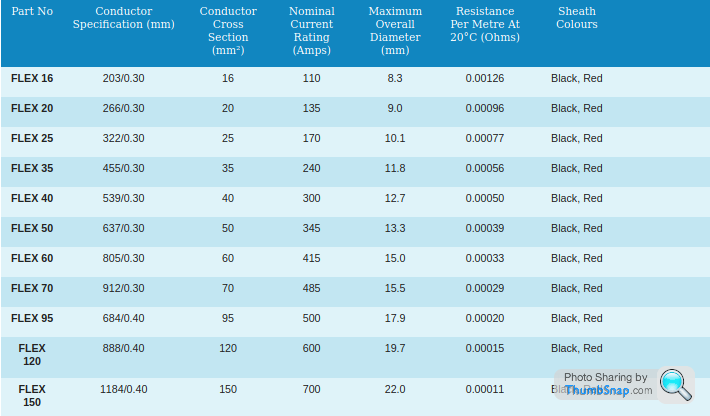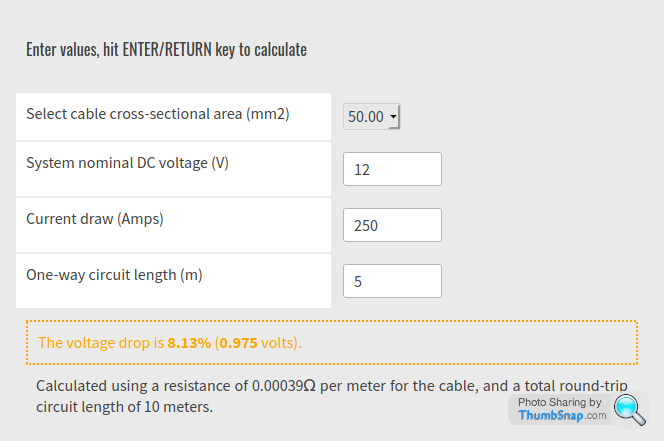Jump leads for 4.4L V8 diesel?
Discussion
Bought a 2017 Range Rover with the 4.4L diesel V8 and, since it's a Range, thought it would be a good idea to buy some nice jump leads for it to keep in the boot.
Best ones I could find were 50mm2 cable, although the manufacturer only rates this for up to a 3L diesel engine.
Anyone know if those will be OK to use, or where I can find some better ones? I worry if the cable is much thicker they will become very heavy / inflexible / expensive.
Best ones I could find were 50mm2 cable, although the manufacturer only rates this for up to a 3L diesel engine.
Anyone know if those will be OK to use, or where I can find some better ones? I worry if the cable is much thicker they will become very heavy / inflexible / expensive.
felixlg said:
Bought a 2017 Range Rover with the 4.4L diesel V8 and, since it's a Range, thought it would be a good idea to buy some nice jump leads for it to keep in the boot.
Best ones I could find were 50mm2 cable, although the manufacturer only rates this for up to a 3L diesel engine.
Anyone know if those will be OK to use, or where I can find some better ones? I worry if the cable is much thicker they will become very heavy / inflexible / expensive.
If they are genuinely 50mm^2, that is HUGE.Best ones I could find were 50mm2 cable, although the manufacturer only rates this for up to a 3L diesel engine.
Anyone know if those will be OK to use, or where I can find some better ones? I worry if the cable is much thicker they will become very heavy / inflexible / expensive.
I've made plenty from 35mm^2, ( welding cable, same as mentioned ) and even that's pretty big, far bigger than almost any jump leads for retail sale.
And of course, cable is very important, but as are good secure croc clips or whatever is used to make the connection. That would be the weak link more than cable size ( I'll ignore poor quality sets here though....often they're all insulation and no copper lol )
From a practical point of view, I'd just go 35mm^2 and a good 4-5m length so they're easy to route to another vehicle.
Or 50 if you really must.
These jump leads get good reviews on amazon, various sizes.
https://www.amazon.co.uk/KRI%C3%8BGER-Battery-Mete...
https://www.amazon.co.uk/KRI%C3%8BGER-Battery-Mete...
Rockatansky said:
These jump leads get good reviews on amazon, various sizes.
https://www.amazon.co.uk/KRI%C3%8BGER-Battery-Mete...
They do look to tick most boxes.https://www.amazon.co.uk/KRI%C3%8BGER-Battery-Mete...
4m/35mm^2 would be enough for almost anything. Or if you needed length, 6m.
Unless it is some seriously heavy duty diesels or something, I can't see any need for 50mm^2.
Even the croc clips look pretty decent, as long as you've the room to get them fitted.
felixlg said:
Bought a 2017 Range Rover with the 4.4L diesel V8 and, since it's a Range, thought it would be a good idea to buy some nice jump leads for it to keep in the boot.
Best ones I could find were 50mm2 cable, although the manufacturer only rates this for up to a 3L diesel engine.
Anyone know if those will be OK to use, or where I can find some better ones? I worry if the cable is much thicker they will become very heavy / inflexible / expensive.
Yes, 50mm² cable is ideal for the job, has a current rating of 345 Amps, during cold start there could be anything from 200 to 350 amps being drawn through them and there will be a volt-drop due to the cable length, jump leads are only as good as the connections each endBest ones I could find were 50mm2 cable, although the manufacturer only rates this for up to a 3L diesel engine.
Anyone know if those will be OK to use, or where I can find some better ones? I worry if the cable is much thicker they will become very heavy / inflexible / expensive.
Cables less than 50mm² aren't up to the job

Penelope Stopit said:
Yes, 50mm² cable is ideal for the job, has a current rating of 345 Amps,
The nominal current rating is not important here since cable overheating is not the limiting factor. What matters is the total voltage drop, which will depend on the resistance and hence the length.GreenV8S said:
Penelope Stopit said:
Yes, 50mm² cable is ideal for the job, has a current rating of 345 Amps,
The nominal current rating is not important here since cable overheating is not the limiting factor. What matters is the total voltage drop, which will depend on the resistance and hence the length.Visited back to post up the volt-drop across 2 x 5 meter lengths of 50mm² cable @ 250 Amps starter motor current draw (could go higher)
As can be seen with the below calculation, 0.975 volts volt-drop although a touch high (0.75 would have been nice) won't prevent good jump starting

Penelope Stopit said:
Cables less than 50mm² aren't up to the job
Absolute nonsense.I've seen generators started using 50mm cables, and they're about 3-4x the size of the 4.4L the OP is talking about. There is zero need for cables that large to start such a small engine, unless your jump leads are about 50m long.
I've finally got a new scope, so might have a go at scoping some of the generators in work starting. There are some small ones, but some absolute beasts too ( some 6 batteries )
Edited by stevieturbo on Saturday 20th March 18:43
cable sizing...
Piece of electro wizardry... Length and cross sectional area are what dictates the resistance. And that resistance dictates the voltage drop.
And a good secure connection - all very well having great leads if the claps are poor. They need to be copper or decent metal with a good clamping action. 35mm is around 170 amps continuious. but a starter motor is pulsed and of short duration. so Id say 35mm would be good, but it needs to be supper flexiable ! no trying to start a siezed engine or the like... and you will be fine.
Piece of electro wizardry... Length and cross sectional area are what dictates the resistance. And that resistance dictates the voltage drop.
And a good secure connection - all very well having great leads if the claps are poor. They need to be copper or decent metal with a good clamping action. 35mm is around 170 amps continuious. but a starter motor is pulsed and of short duration. so Id say 35mm would be good, but it needs to be supper flexiable ! no trying to start a siezed engine or the like... and you will be fine.
warch said:
I'd have thought normal good quality heavy duty leads would be sufficient for the task. I can't imagine there will be a need to crank the thing over and over like an old truck, if it doesn't start more or less immediately it probably won't start at all.
Problem is...what is "normal" and what is "heavy duty".From my experience of seeing what is for sale..."normal" is a piece of s
 t pair of leads, with huge OD cables....that are all insulation, and about 2.5mm^2 of copper inside, with even worse plastic croc clips.
t pair of leads, with huge OD cables....that are all insulation, and about 2.5mm^2 of copper inside, with even worse plastic croc clips.Like the Amazon link, where they state actual cable sizes, you can see the clips are pretty substantial and metal. That is the correct way to sell that sort of thing.
But rarely do you ever see those for sale in shops or even motor factors.
Dave. said:
Comparing their 1000A to the Amazon link. It is hard to tell from the images, but the croc clips look like they could be flimsy, and also more insulated would be betterAlso no mention at all of cable sizes used.
For those reasons alone I wouldn't even consider them
This does like people completely over specifying the kit they need. My ancient heavy duty Halfords leads have seen loads of use, starting stuff like diesel land rovers. You’d need something heavier for lorries or tractors but anything like a Range Rover which is basically a car would be well within their capabilities.
Penelope Stopit said:
The cable current rating is of the utmost importance here due to it being the deciding factor for volt-drop over length
Total resistance is what matters here, and that can't be known without taking the length into account, which the 'cable current rating' clearly doesn't.Gassing Station | Engines & Drivetrain | Top of Page | What's New | My Stuff



